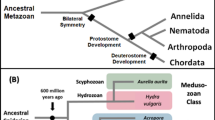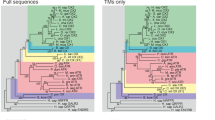Abstract
Recent sequencing of amphioxus and sea urchin genomes has provided important data for understanding the origins of enzymes that synthesize adrenal and sex steroids and the receptors that mediate physiological response to these vertebrate steroids. Phylogenetic analyses reveal that CYP11A and CYP19, which are involved in the synthesis of adrenal and sex steroids, first appear in the common ancestor of amphioxus and vertebrates. This correlates with recent evidence for the first appearance in amphioxus of receptors with close similarity to vertebrate steroid receptors. Other CYP450 enzymes involved in steroid synthesis can be traced back to invertebrates, in which they have at least two functions: detoxifying xenobiotics and catalyzing the synthesis of sterols that activate nuclear receptors. CYP450 metabolism of hydrophobic xenobiotics may have been a key event in the origin of ligand-activated steroid receptors from constitutively active nuclear receptors.
Similar content being viewed by others
Article PDF
Author information
Authors and Affiliations
Corresponding author
Rights and permissions
About this article
Cite this article
Baker, M. Origin and diversification of steroids: Co-evolution of enzymes and nuclear receptors. Nat Prec (2010). https://doi.org/10.1038/npre.2010.4674.1
Received:
Accepted:
Published:
DOI: https://doi.org/10.1038/npre.2010.4674.1



